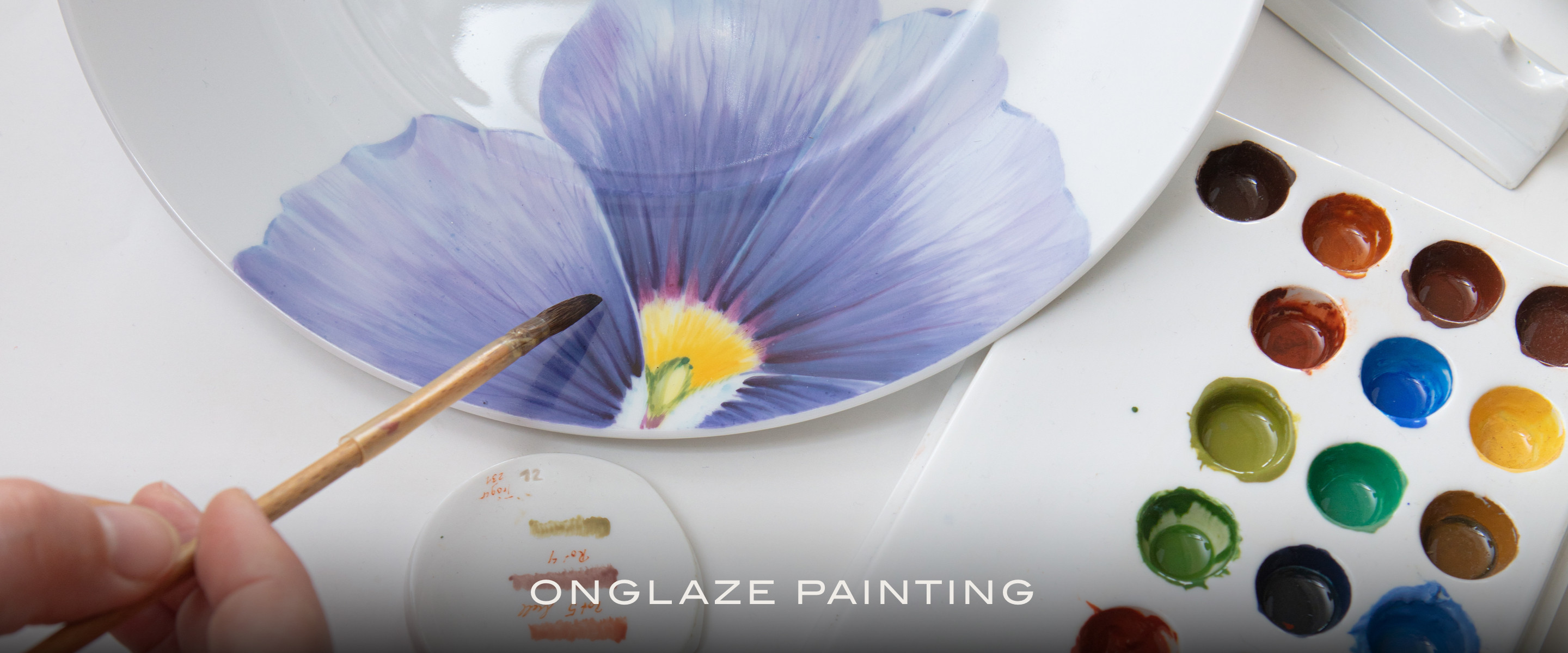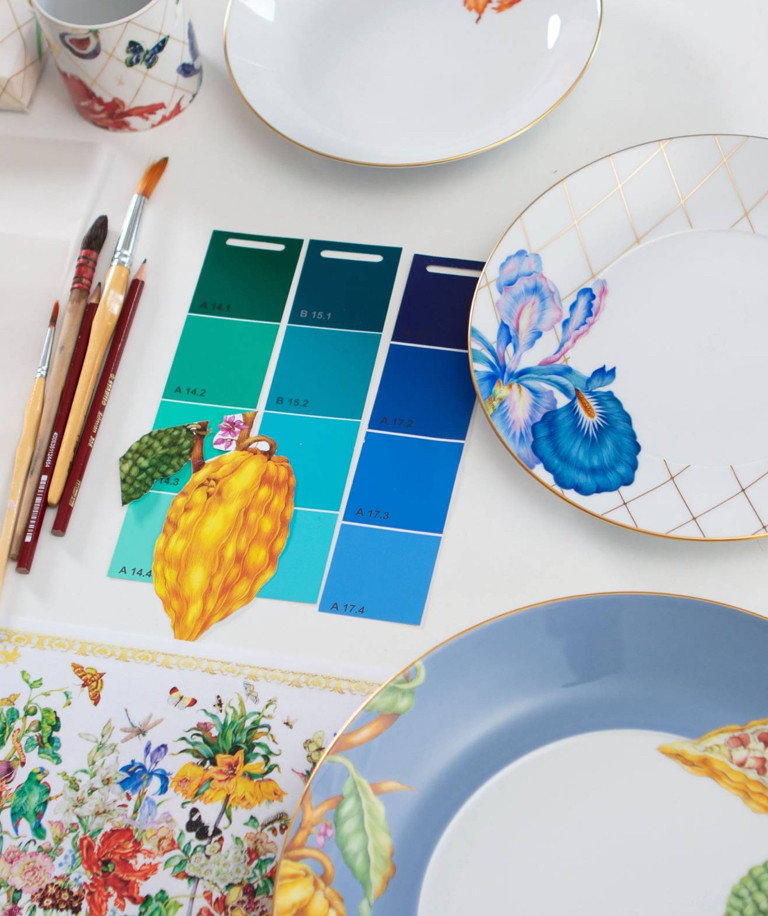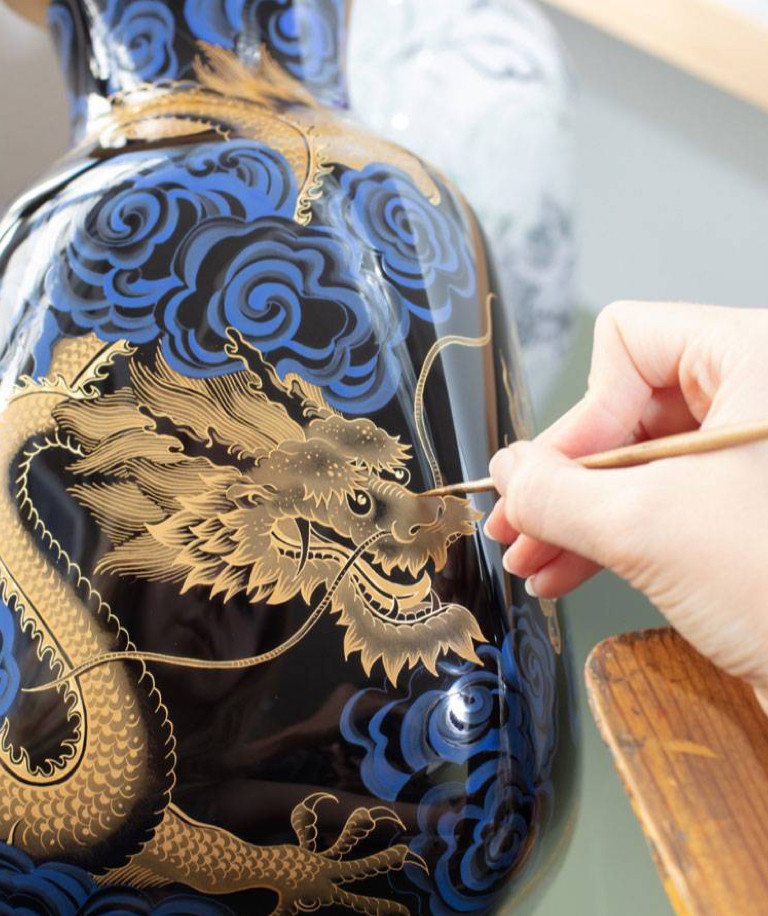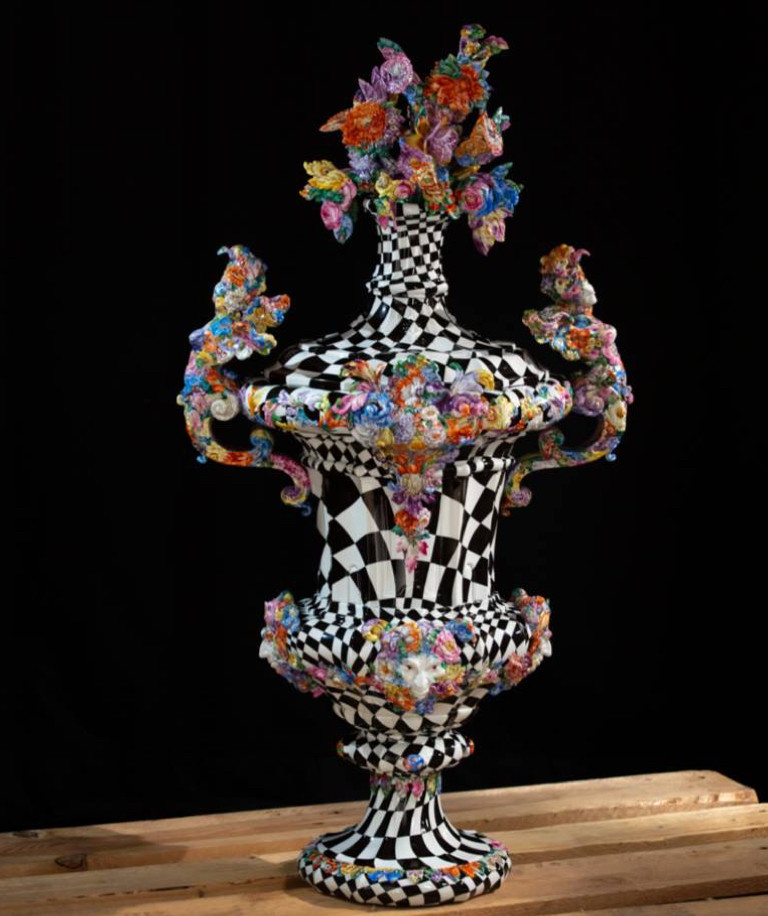
The complexity of porcelain painting
#playofcolors
#playofcolors
-
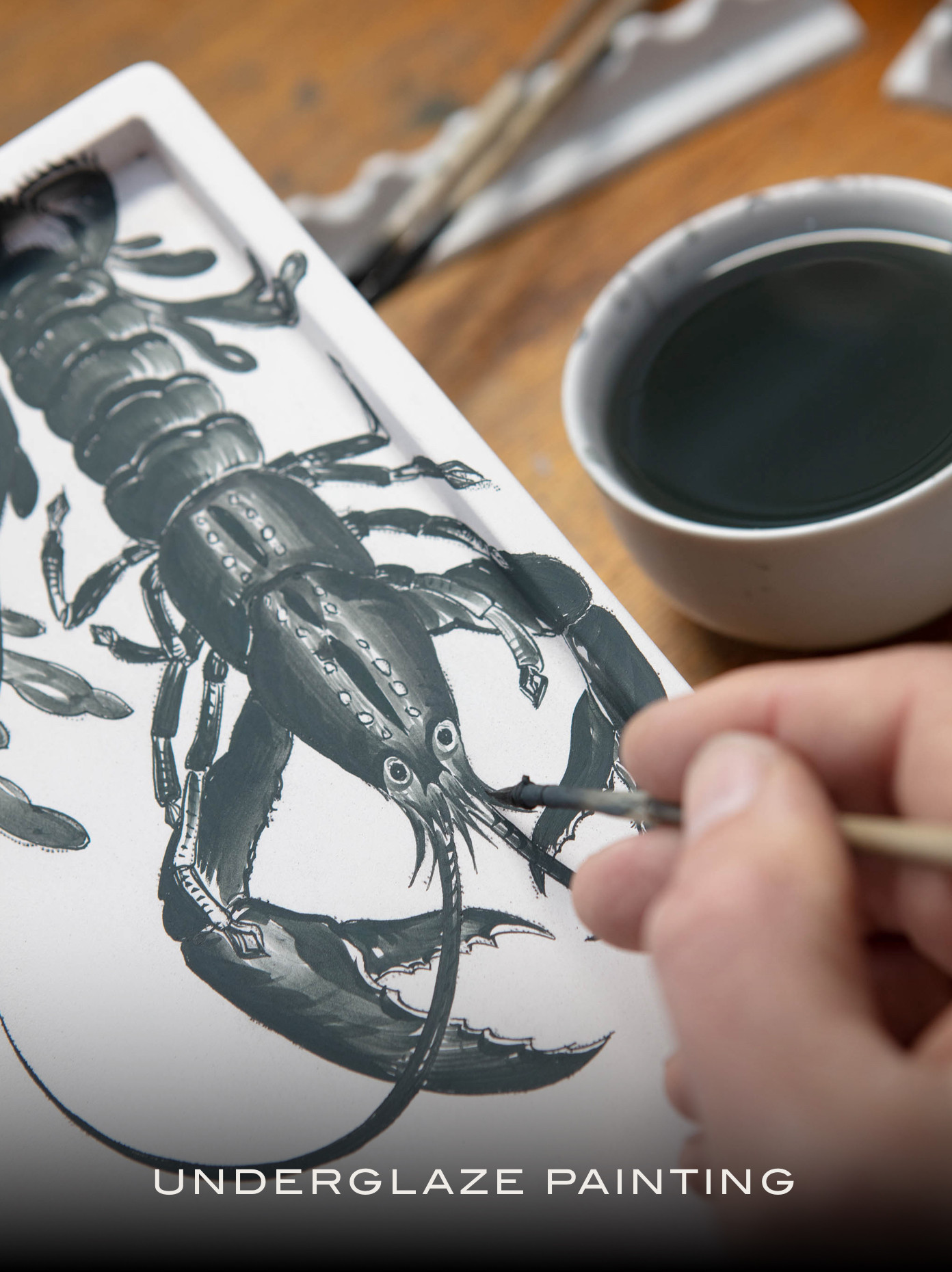 Each piece of porcelain is a complex, multi-layered work of art. From the composition of the raw materials to the shaping, painting, firing and glazing, porcelain craftsmanship combines creativity, passion and centuries of experience. It is the harmonious composition of all partial aspects that makes each porcelain piece a total work of art. And each production step in turn has its own complexity and history. Would you have known, for example, that each porcelain painting consists of up to 5 different levels?
Each piece of porcelain is a complex, multi-layered work of art. From the composition of the raw materials to the shaping, painting, firing and glazing, porcelain craftsmanship combines creativity, passion and centuries of experience. It is the harmonious composition of all partial aspects that makes each porcelain piece a total work of art. And each production step in turn has its own complexity and history. Would you have known, for example, that each porcelain painting consists of up to 5 different levels?
When color meets porcelain, the chemistry has to be right. Because when the porcelain undergoes the various firings, the colors, consisting of coloring metal oxides and bonding fluxes, are also exposed to temperatures of up to 1,500 °C. This means that the colors need to have a chemical composition that ensures that they finally meet the desired visual appearance and form a long-lasting bond with the porcelain base material.
In addition to the chemistry, the timing must also be exactly right. In its production, porcelain undergoes at least two firing processes at different temperatures. The first is the glow firing at up to 950 °C, which fires the shaped base material into a solidified "body" that is porous and absorbent. And secondly, the glaze firing - after the body has been dipped in a thin glaze, a firing at up to 1450 °C takes place, which gives the porcelain its smooth, shiny surface that reflects in the light. Depending on the decor, up to three additional firings at different temperatures follow. After each firing, the texture and thus the possibility of applying the color is different.
„Color is a power which directly influences the soul.“
Wassily Kandinsky.
Wassily Kandinsky.
-
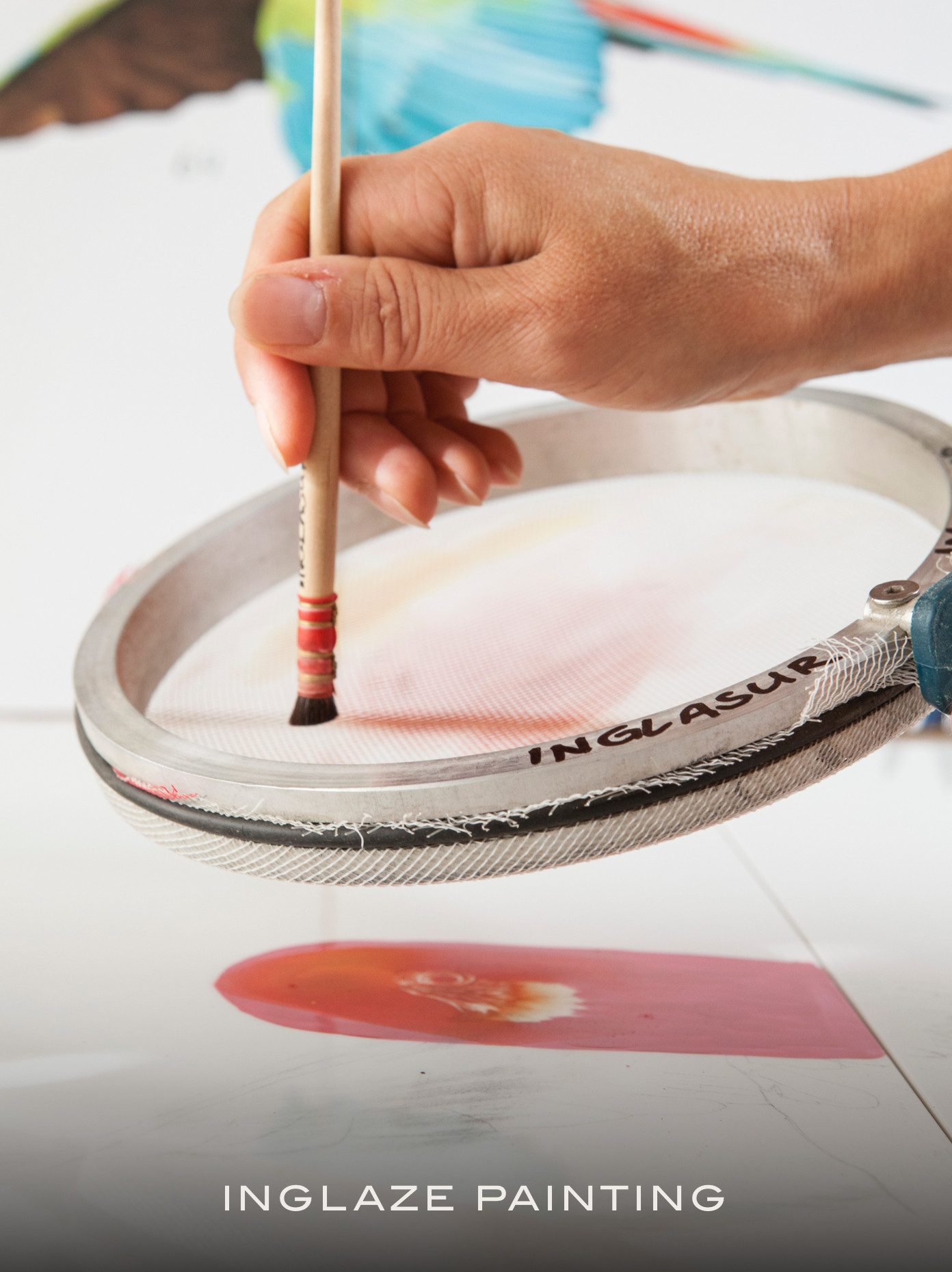 As a result of these basics, three different genres of porcelain painting have emerged: Underglaze, Inglaze and Onglaze painting.
As a result of these basics, three different genres of porcelain painting have emerged: Underglaze, Inglaze and Onglaze painting.
The underglaze painting is applied to the body after the first firing and before dipping into the glaze. This requires the utmost concentration – because every drop of paint, no matter how small, immediately soaks into the porous material. Nevertheless, underglaze painting is particularly suitable for filigree motifs and fine lines. This is also the case with the cobalt blue onion pattern, which has been one of the most famous designs in the world since it was developed in 1739.
Inglaze painting, the colors find their way onto the porcelain after the second firing, i.e. the glost firing. The color sinks through the renewed firing at temperatures of up to 1500 °C into the glaze and the material and penetrates it over a large area. Accordingly, this technique is ideally suited for wide areas and backgrounds.
Onglaze painting is carried out in the next step on the smoothly fired, melted-out glaze. Since the firing temperatures from this step on are only up to 900 °C, a much wider range of colors opens up and creates the greatest possible artistic freedom in painting. If gold colors or further details are to be added, the first onglaze painting must sometimes even be followed by a second firing. Thus, at the end, when all types of porcelain painting have been used, the finished porcelain piece has found its way into the flames of the kiln up to five times.
Many decors use the full range of possibilities of porcelain painting. Thus, these are planned down to the smallest detail in the conception phase and applied and fired layer by layer in the right places on different levels. Finally, a multi-layered work of art blossoms that combines all the splendor of over 300 years of porcelain painting and enchants the senses in a magical way.
